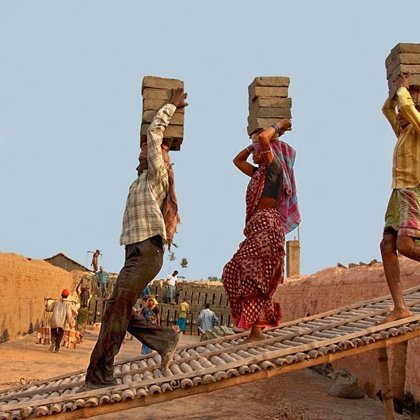CHILD TRAFFICKING ,CHILD LABOURERS AND THE PLAQUE OF MODERN SLAVERY.MORE THAN 165 MILLION CHILDREN ARE ENGAGED IN CHILD LABOUR ALL OVER THE WORLD.
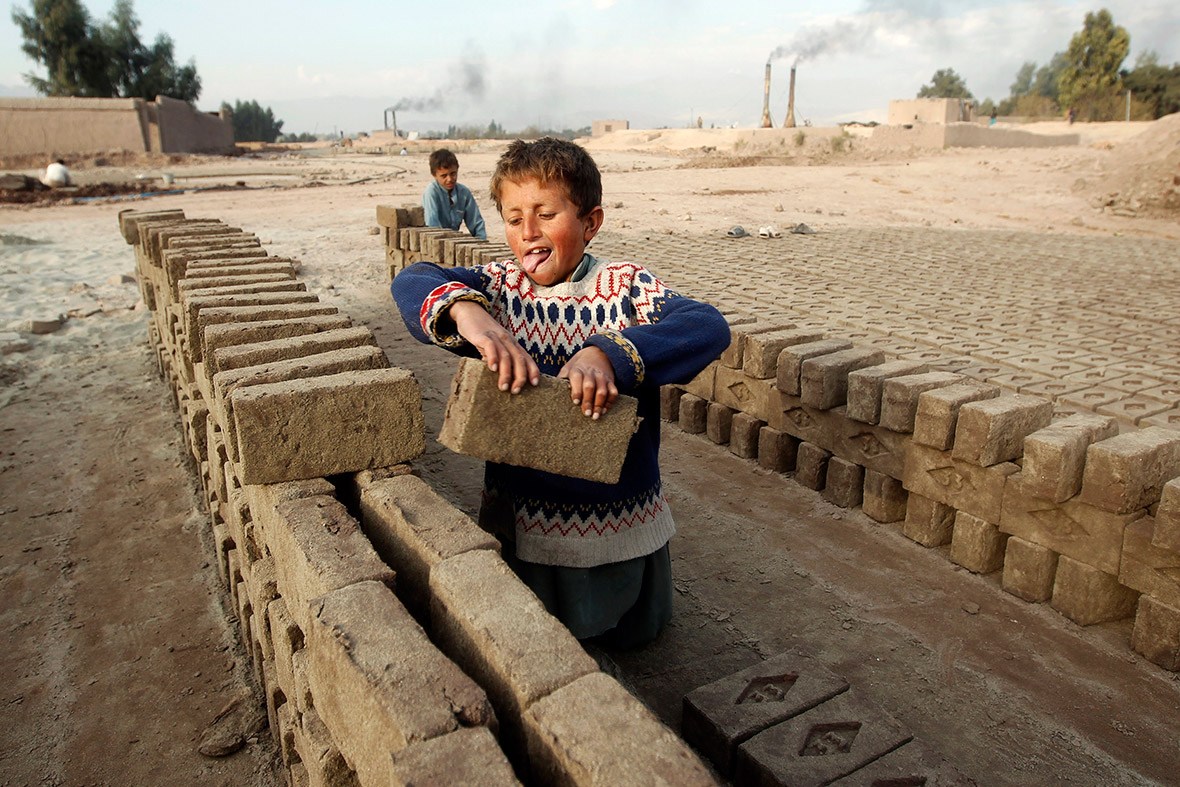
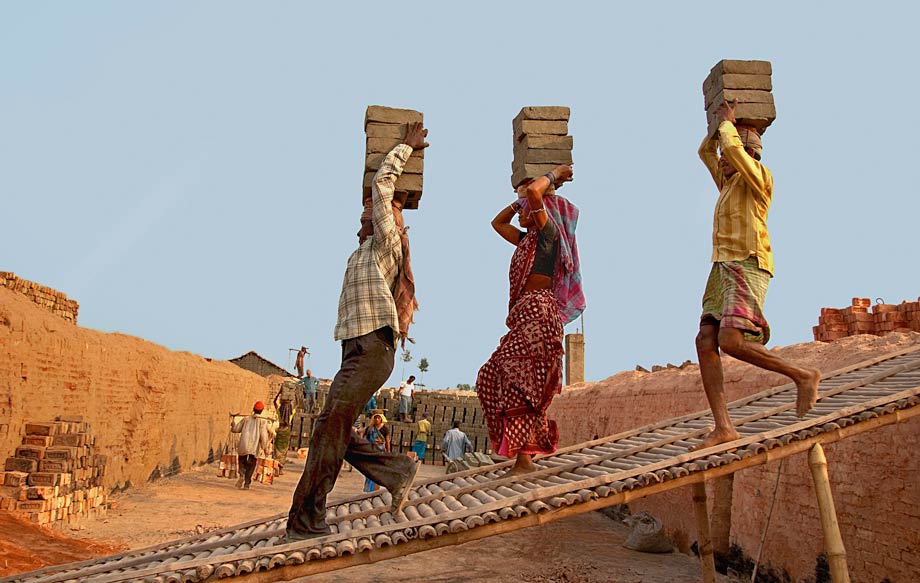 Thousands of children found working in India brick kiln in Nepal, Afghanistan, Pakistan, India, Sri Lanka and Bangladesh.Girls as young as seven found carrying bricks on their head.Some of the children were as young as four.Many children end up working alongside their parents because of a lack of schools and teachers.Local officials said they would investigate why the rescued children had not been enrolled in a nearby primary school.
Thousands of children found working in India brick kiln in Nepal, Afghanistan, Pakistan, India, Sri Lanka and Bangladesh.Girls as young as seven found carrying bricks on their head.Some of the children were as young as four.Many children end up working alongside their parents because of a lack of schools and teachers.Local officials said they would investigate why the rescued children had not been enrolled in a nearby primary school.
History books tell the 400-year story of one of the most unfathomable practices ever engaged in by mankind of humans being bought, sold and traded as commodities, and of men and women shackled together on slave ships destined towards a life of captivity. This is indicative of the radical transformation of the international community in its attitude towards an inhumane practice that should have never been allowed to occur.In the world of work, over 165 million children aged 5 to 14 years are going to work. Of these, 74 million are engaged in work that could be dangerous to health. Compared with other continents, child labour is more in Asian countries. Despite the fact that over the past six years the number of minors who work here fell by nearly 5 million people, yet 122 million children and adolescents aged 5 to 14 years engaged in commercial activities or in the workplace. Among all countries, child labour is more in Nepal, Afghanistan, Pakistan, India, Sri Lanka and Bangladesh.Every week, thousands of people move from their traditional communities to find work in large cities. In border towns like Siliguri in India, children are at risk of harm, exploitation and abuse. Away from the support of their extended families and communities, children are easy targets for traffickers, who transport them across India or into other countries. World Vision is working to protect, empower and educate children in Siliguri. Learn more about our work in child protection.Modern forms of slavery can include debt bondage, where a person is forced to work for free to pay off a debt, child slavery, forced marriage, domestic servitude and forced labour, where victims are made to work through violence and intimidation.Child labour in Pakistan has increased in last two decades. The main causes of child labour are large family size, and unemployment. People with low wages or earnings and too many children cannot afford in quality life. They can’t even fill the stomach of their children , rather they could send them to school. So the children in such families are sent to learn some skills and earn while learn. People with too many dependents are unable to groom themselves. They find no resources to improve them personality. Thus, they have to lose all opportunities in life. They are being replaced by quality workers, so they lose their employment. To get rid of their miserable condition, they send the children to find work. Children under age are hired at extrem low salaries and most by are abused by their employers and adult co-workers. There should be proper law for child-labour. The children working at young age need to be protected by adults of our society.Considerable differences exist between the many kinds of work children do. Some are difficult and demanding, others are more hazardous and even morally reprehensible. Children carry out a very wide range of tasks and activities when they work.Not all work done by children should be classified as child labour that is to be targeted for elimination. Children’s or adolescents’ participation in work that does not affect their health and personal development or interfere with their schooling, is generally regarded as being something positive. This includes activities such as helping their parents around the home, assisting in a family business or earning pocket money outside school hours and during school holidays. These kinds of activities contribute to children’s development and to the welfare of their families; they provide them with skills and experience, and help to prepare them to be productive members of society during their adult life.The term “child labour” is often defined as work that deprives children of their childhood, their potential and their dignity, and that is harmful to physical and mental development.In its most extreme forms, child labour involves children being enslaved, separated from their families, exposed to serious hazards and illnesses and/or left to fend for themselves on the streets of large cities often at a very early age. Whether or not particular forms of “work” can be called “child labour” depends on the child’s age, the type and hours of work performed, the conditions under which it is performed and the objectives pursued by individual countries. The answer varies from country to country, as well as among sectors within countries. All forms of slavery or practices similar to slavery, such as the sale and trafficking of children, debt bondage and serfdom and forced or compulsory labour, including forced or compulsory recruitment of children for use in armed conflict.The use, procuring or offering of a child for prostitution, for the production of pornography or for pornographic performances. The use, procuring or offering of a child for illicit activities, in particular for the production and trafficking of drugs as defined in the relevant international treaties.Work which, by its nature or the circumstances in which it is carried out, is likely to harm the health, safety or morals of children.Labour that jeopardises the physical, mental or moral well-being of a child, either because of its nature or because of the conditions in which it is carried out, is known as “hazardous work”.In order to appreciate the trafficking bill, some understanding of the history of international and domestic anti-trafficking law is essential. Against this backdrop it will soon become clear that the proposed law will do little to alleviate India’s shame of harbouring the highest number of the world’s ‘modern slaves’. It also seems to be a shallow attempt to ape a highly carceral, western approach to a juridically constructed problem of ‘trafficking’ undertaken in perfect amnesia of a richer, more systemic, and indigenous legal approach to the exploitation that has long afflicted vulnerable sections of India’s work force. Herein lies the irony of poorly thought out laws meant to act as band-aids on the long festering problem of severely unequal wealth and resource distribution.
 How we can fight child labour in the tobacco industry.Many of them complained of suffering nausea, vomiting, headaches, and dizziness while they worked all symptoms consistent with acute nicotine poisoning, or green tobacco sickness, from nicotine being absorbed through the skin while handling tobacco.
How we can fight child labour in the tobacco industry.Many of them complained of suffering nausea, vomiting, headaches, and dizziness while they worked all symptoms consistent with acute nicotine poisoning, or green tobacco sickness, from nicotine being absorbed through the skin while handling tobacco.
Worldwide, 60 per cent of all child labour in the age group five to 17 years work in agriculture, including farming, fishing, aquaculture, forestry, and livestock. The majority of child labour are unpaid family members. One component of providing access to education is the School Infrastructure Development programme which focuses on improving school facilities, including sanitation, potable water, sports facilities and classroom equipment.An After School Programme seeks to prevent children from dropping out of school by providing them meals and engaging them in post-school activities, particularly during peak agriculture season, when the need for working hands is higher. “Our programme has been implemented in more than 50 schools in Andhra Pradesh and Karnataka. Over the years, we have seen a significant change in the school-going patterns of children.“Students, supported by parents, prefer to go to schools which now have good facilities and infrastructure. We are pleased at the way in which local communities have joined hands with us in spreading awareness against child labour and encouraging students to attend schools“Trafficking in persons” shall mean the recruitment, transportation, transfer, harbouring or receipt of persons, by means of the threat or use of force or other forms of coercion, of abduction, of fraud, of deception, of the abuse of power or of a position of vulnerability or of the giving or receiving of payments or benefits to achieve the consent of a person having control over another person, for the purpose of exploitation. Exploitation shall include, at a minimum, the exploitation of the prostitution of others or other forms of sexual exploitation, forced labour or services, slavery or practices similar to slavery, servitude or the removal of organs: The consent of a victim of trafficking in persons to the intended exploitation set forth in subparagraph of this article shall be irrelevant where any of the means set forth in subparagraph have been used.Another layer of complexity comes from trafficking’s long history of association with prostitution. Historically, and more recently, trafficking was conflated with trafficking for sex work and, indeed, with sex work itself. When the US government then started ranking governments annually in the US State Department’s Trafficking in Persons Reports in terms of their actions to prevent trafficking and prosecute traffickers, and then withholding “nonhumanitarian, non-trade-related” aid from the worst offenders, governments scrambled to amend their anti-sex work laws in order to be placed higher up in the TIP rankings. Regions of the world like south Asia, meanwhile, became playgrounds of sexual humanitarianism, as religious evangelicals and liberals alike sought to rescue third world sex workers and purchase their ‘freedom’.Competing legal traditions and government inaction.It is in the context of these international developments that we need to assess the Indian trafficking bill. Like most countries around the world, India has a growing architecture of anti-trafficking law, put into place at different points in time to address varied manifestations of extreme labour exploitation. Yet the Indian Penal Code does not define the terms slavery, bondage, forced labour, or begary (where a person has been forced to work against his will and without payment). Many of the labour-related provisions in the IPC were a product of colonial rule, and thus they reflected the realities of that time. They also often furthered the colonial government’s interests in extracting compulsory labour from the natives.Meanwhile, the Indian Constitution, as a self-styled radical legal document reflecting postcolonial aspirations for modern nationhood, is concerned with indigenous forms of servitude. Under Part III, which deals with fundamental rights, Article 23 prohibits the traffic in human beings, begary, and other similar forms of forced labour, making the contravention of this provision an offence punishable in accordance with law.The Indian government needs to pause and dig deep into its own long and complex legal history, as well as its unique vision of dealing with extreme forms of exploitation that today travel under the conceptual banner of ‘trafficking’.In the 1970s, India, keen to live up to the aspirations of the Indian Constitution, passed several social legislations. These were the Bonded Labour System (Abolition) Act, 1976, as amended by the Bonded Labour System (Abolition) Amendment Act, 1985 (BLSAA); the Contract Labour (Regulation & Abolition) Act, 1970, as amended by the Contract Labour (Regulation & Abolition) Amendment Act No.14 of 1986 (CLRAA); and the Inter-State Migrant Workmen Act (Regulation of Employment and Conditions of Service) Act, 1979 (ISMWA).All of these laws counter extreme forms of labour exploitation that are now commonly included under the term trafficking. Their intervention models are comprehensive, multi-pronged, community-based, and aimed at systemic reform – several notches above any simplistic attempts at rescue and rehabilitation. The BLSAA, for instance, not only prohibits and penalises existing and future bonded labour; all bonded labourers are set free and, by law, their obligation to repay the debt is extinguished.The BLSAA has several elaborate provisions rendering existing and future legal action arising from the debt void. Creditors accepting any repayment for an extinguished debt can face imprisonment and fines. Local district magistrates have to ensure the act’s implementation, the eradication of bonded labour, and the rehabilitation of bonded labourers so as to prevent their becoming bonded again. Vigilance committees with representatives of the state, the affected community, social workers, rural development institutions, and credit institutions are to assist the executive in this, while also defending suits against freed bonded labourers. The CLRAA and ISMWA, meanwhile, address chronic exploitation by intermediaries and sub-contractors by imposing on them the obligations of the employer. Consider the case of India! Globalization has helped the Indian economy to stand on its own in due time but has also catapulted the need of cheap unskilled labour. Unfortunately, millions of children are included in this huge domain of unskilled labourers. Not only they are deprived of their childhood, but also they are stripped of their fundamental rights.Not to talk about their meagre wages what they receive, India is one of the countries in South East Asia where human trafficking has become a menace. The migration of children from rural areas to urban domain has always been a common feature in Indian society. The meteoric rise of urban Indian culture has necessitated huge real estate growth where millions of children are engaged in physically intensive work which is detrimental to their natural growth and development. Let’s not forget the plight of the domestic helps in India, where it has become a norm to keep little children as domestic helps. The condition of girls in the child labour sector is pathetic to say the least. Minimal education, malnutrition, early marriage, societal exploitation and even prostitution have become common in this arena.It is indeed very sad to say that last year, the central government of India amended child labour laws to allow children below 14 to work in family businesses and the entertainment industry (excluding circuses). In India 33 million children are employed in various forms of child labour. There is no denying the fact that education is the only solution to abolish child labour in a developing country like India. Migration and debt trap have always been culprits in the rural economy and thus awareness programmes are indeed necessary.
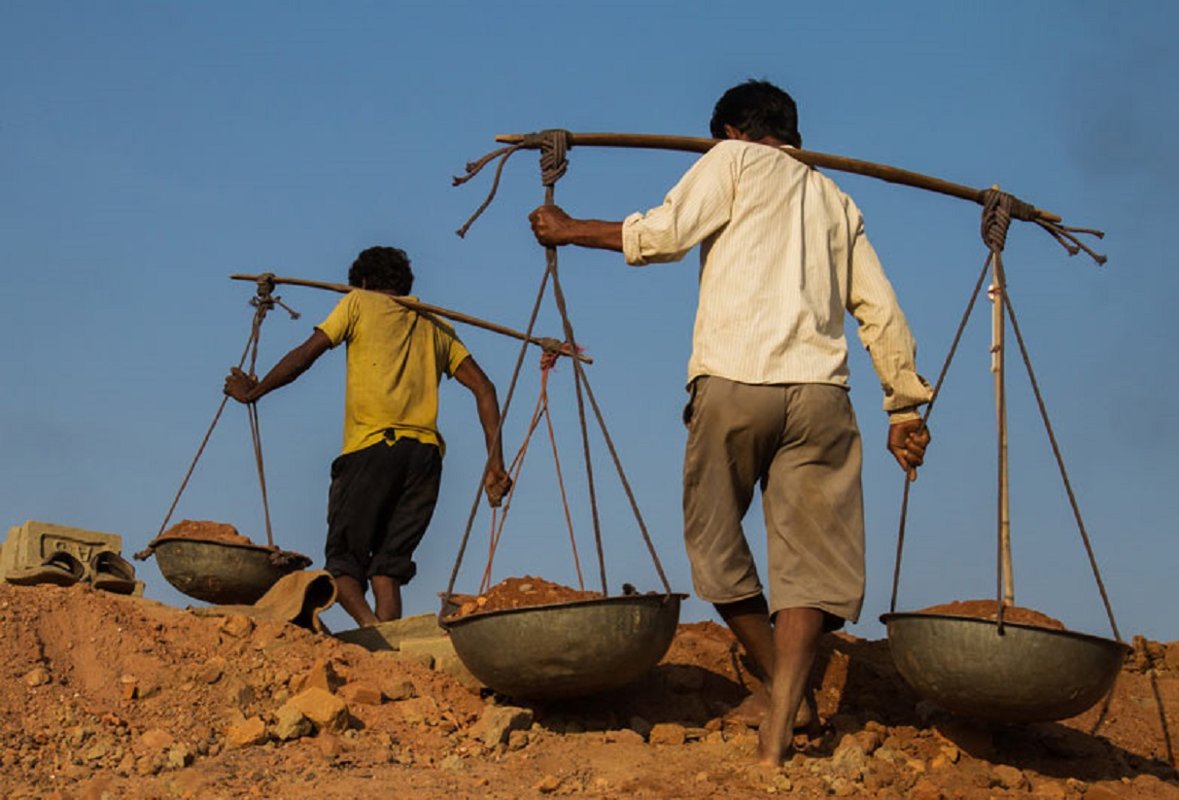 Child labourers are vulnerable to abuse, and their families are often trapped in a cycle of poverty. In extreme cases, children are forced to work under threat of violence or death. Children can fall ill and get injured injuries have been as severe as loss of body parts.When children are of an appropriate age for the task, receive appropriate pay and work in safe environments, they can be considered “willing participants in work.” These children can balance work with school and play, and they develop the necessary skills to transition into adulthood.
Child labourers are vulnerable to abuse, and their families are often trapped in a cycle of poverty. In extreme cases, children are forced to work under threat of violence or death. Children can fall ill and get injured injuries have been as severe as loss of body parts.When children are of an appropriate age for the task, receive appropriate pay and work in safe environments, they can be considered “willing participants in work.” These children can balance work with school and play, and they develop the necessary skills to transition into adulthood.
Lack of financial institutions for the extreme poor can push them towards unregulated money-lenders who charge high interest rates or insist on large loans that leave the poor vulnerable to debt bondage.Poverty can trap people in debt bondage, because interest may add to the debt burden as fast as the person in debt can pay it off, Money-lenders may deliberately structure credit arrangements to trap people into long term debt bondage.Poverty can make it impossible for the poor to move to an area where they can get employed as free worker.Poverty may make it impossible for a worker to challenge an 'illegal' labour situation.When children, especially young ones are exposed to long hours of work in harsh and dangerous environments, which threatens their lives and limbs as well as jeopardize their normal physical, mental, emotional and moral development, it is termed child labour. As a result, they cannot imagine bettering something. I think though Bangladesh is a developed country, so most of the lower level of peoples is involving in service-oriented sectors to earned money. Most of the children they are doing domestic very little business. As a result, they do not get educationally facilities.Child domestic service is a widespread practice in Bangladesh. The Rapid Assessment of Child Labour Situation in Bangladesh estimated that in the city of Dhaka alone there were about 120,000 child domestics. Especially in Dhaka, city employers in the urban areas usually recruit children from their village homes through family, friends or contacts. Most of the child domestic workers come from the most vulnerable families, many of them being orphans or abandoned children. The majority of child domestics tend to be between 12 and 16years old, but children as young as 5 or 6 years old can also be found working. A survey of child domestic workers found that 38 percent were 11 to 13 years old and nearly 24 percent were 5 to 1years old. Their employers usually take care of their daily necessities like clothes, oil, soap, comb, towel, bedding and sleeping materials. The child domestic workers are often the least paid in the society, their remuneration ranging from 8taka to 40taka per month. In most of the cases, they hand over all their earnings to their parents, leaving nothing for themselves.Currently, child labor in Bangladesh is a critical issue. Day by day child labor is growing in different sectors. I think scarcity of one’s income to maintain his/her family and high density of population are the two main causes of child labor in our country. Different children are involved in difference activities to earn. Some children are involved with their traditional family jobs like clay modelling. Clay modeling was a tradition of our country earlier. Now this sector is in a destroyed position in Bangladesh. However, till now parents are sending their little children at hard work to save their family tradition with encourage. However, they do not get minimum facilities from the government and any private organization. As a result, unemployment and illiteracy rate is continuously increasing in Bangladesh.Child is any person who is yet to compete fourteen years of age’’. Bangladesh has the largest number of child workers in the world. They are employed in many industries and trades, including garments, footwear, brick kilns, stainless steel, hotels, textile shops and bus contractor etc. A dense population, limited resources, and frequent natural calamities complicate the poverty situation in Bangladesh and children are the worst victims. Although child labour is not illegal in Bangladesh but government or private organization have not take any positive steps to reduce the child labour. Among them large number of child is working by Bus helper or bus contractors to early age. As a result child labour is increasing day by day in Bangladesh.This has produced a vast pool of people in need of work.International anti-slavery law is not effectively enforced.There is a lack of institutions and procedures to enforce it.Some countries don't effectively enforce anti-slavery laws.This may not always be done for completely unethical reasons - if the alternative is wholesale starvation, then a government may choose not to enforce the law against slavery.
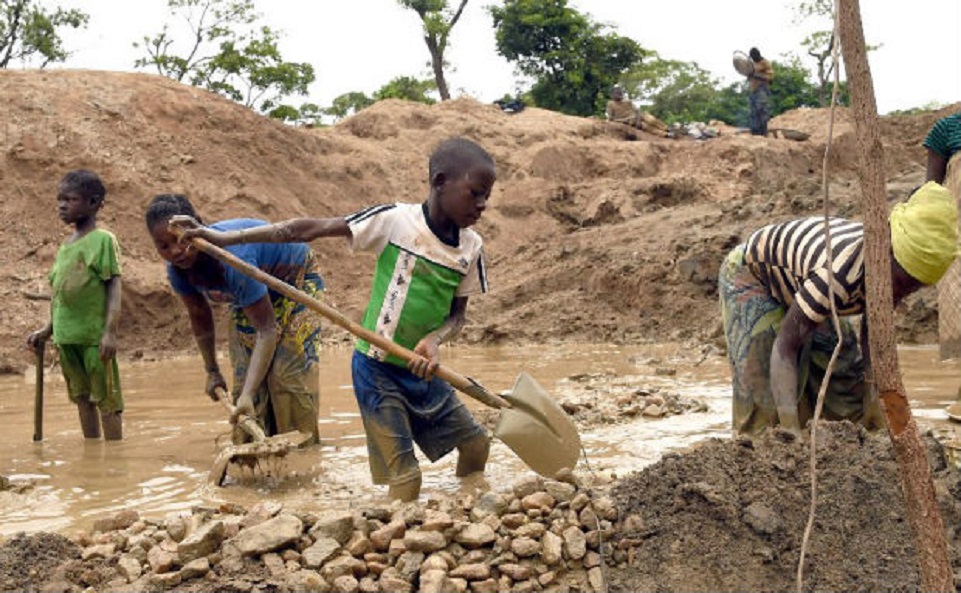 Children mining cobalt for batteries in the Congo,investigation has found child labor being used in the dangerous mining of cobalt in the Democratic Republic of Congo. The mineral cobalt is used in virtually all batteries in common devices, including cellphones, laptops and even electric vehicles.The work is hard enough for an adult man, but it is unthinkable for a child. Yet tens of thousands of Congolese kids are involved in every stage of mining for cobalt.But for the Chinese middlemen who buy the cobalt, there were no such constraints; they have free access.
Children mining cobalt for batteries in the Congo,investigation has found child labor being used in the dangerous mining of cobalt in the Democratic Republic of Congo. The mineral cobalt is used in virtually all batteries in common devices, including cellphones, laptops and even electric vehicles.The work is hard enough for an adult man, but it is unthinkable for a child. Yet tens of thousands of Congolese kids are involved in every stage of mining for cobalt.But for the Chinese middlemen who buy the cobalt, there were no such constraints; they have free access.
Global number of children in child labour has declined by one third since 2000, from 246 million to 168 million children. More than half of them, 85 million, are in hazardous work (down from 171 million in 2000).There are 13 million (8.8%) of children in child labour in Latin America and the Caribbean and in the Middle East and North Africa there are 9.2 million (8.4%).Agriculture remains by far the most important sector where child labourers can be found (98 million, or 59%), but the problems are not negligible in services (54 million) and industry (12 million) mostly in the informal economy.African children have worked in farms and at home over a long history. This is not unique to Africa; large number of children have worked in agriculture and domestic situations in America, Europe and every other human society, throughout history, prior to 1950s. Scholars suggest that this work, specially in rural areas, was a form of schooling and vocational education, where children learned the arts and skills from their parents, and as adults continued to work in the same hereditary occupation. Bass claims this is particularly true in the African contex.Africa is a highly diverse and culturally developed clan. In parts of this clan, farming societies are a system of patrilineal clans and lineages. The young train with the adults. The family and kinsfolk provide a cultural routine that help children learn useful practical skills and enables these societies to provide for itself in the next generation. Historically, there were no formal schools, instead, children were informally schooled by working informally with their family and kin from a very early age. Child labor in Africa, as in other parts of the world, was also viewed as a way to instill a sense of responsibility and a way of life in children particularly in rural, subsistence agricultural communities. In rural Pare people of northern Tanzania, for example, five year olds would assist adults in tending crops, nine year olds help carry fodder for animals and responsibilities scaled with age.In northern parts of sub-Saharan Africa, Islam is a major influence. Begging and child labour was considered as a service in exchange for quranic education, and in some cases continues to this day. These children aged 7–13, for example, were called almudos in Gambia, or talibés in Senegal. The parents placed their children with marabout or serin, a cleric or quranic teacher. Here, they would split their time between begging and studying the Quran. This practice fit with one of the five pillars of Islam, the responsibility to engage in zakat, or almsgiving.The growth of colonial rule in Africa, from 1650 to 1950, by powers such as Britain, France, Belgium, Germany and Netherlands encouraged and continued the practice of child labour. Colonial administrators preferred Africa's traditional kin-ordered modes of production, that is hiring a household for work not just the adults. Millions of children worked in colonial agricultural plantations, mines and domestic service industries.Children in these colonies between the ages of 5-14 were hired as apprentice without pay in exchange for learning a craft. Colonial British laws, for example, offered the native people ownership to some of the native land in exchange for making labor of wife and children available to colonial government's needs such as in farms and as picannins.Fast-fashion retailers such as H&M, New Look, and Sports Direct’s Lonsdale label were all found to have worked with factories which employed 14 year old children in Myanmar, according to the new report “The Myanmar Dilemma” from the Amsterdam-based organisation the Centre for Research on Multinational Corporations (also known as Somo). Some interviewed over 400 workers in 12 factories which supplied garments for international fashion brands and found workers were being paid half of the full legal minimum wage, in addition to a number of children workers as young as 14 working over-time.If a supplier doesn't live up to our standards or national legislation we - in accordance with our routines - demand that the supplier immediately establishes an action plan, which has been done also in this case. One of the measures concerning the twosuppliers in question is improved recruitment routines, which has resulted in improved handling of ID-cards."H&M said the Bangladesh Fire and Safety Accord was extremely important to the company."Although being behind the projected schedule, we are experiencing good progress. This ‘race to the bottom’ led by fashion retailers forever in search for the lowest production hub causes unhealthy competition between garment producing countries in the region, argues Some in the report. “The rule of law in Myanmar is not adequately upheld. The army still has a lot of influence. The garment industry’s operations go largely unchecked. The question is justified if the time is ripe for foreign companies to invest in Myanmar. Garment brands should think twice before they start production in Myanmar. The risk of labour rights violations is very high. Companies should make a thorough analysis of all potential problems. They must ensure that they, together with their suppliers, identify and tackle these risks before placing any orders.It in not the first time H&M has been accused of working with factories that employ workers as young as 14 in Myanmar.
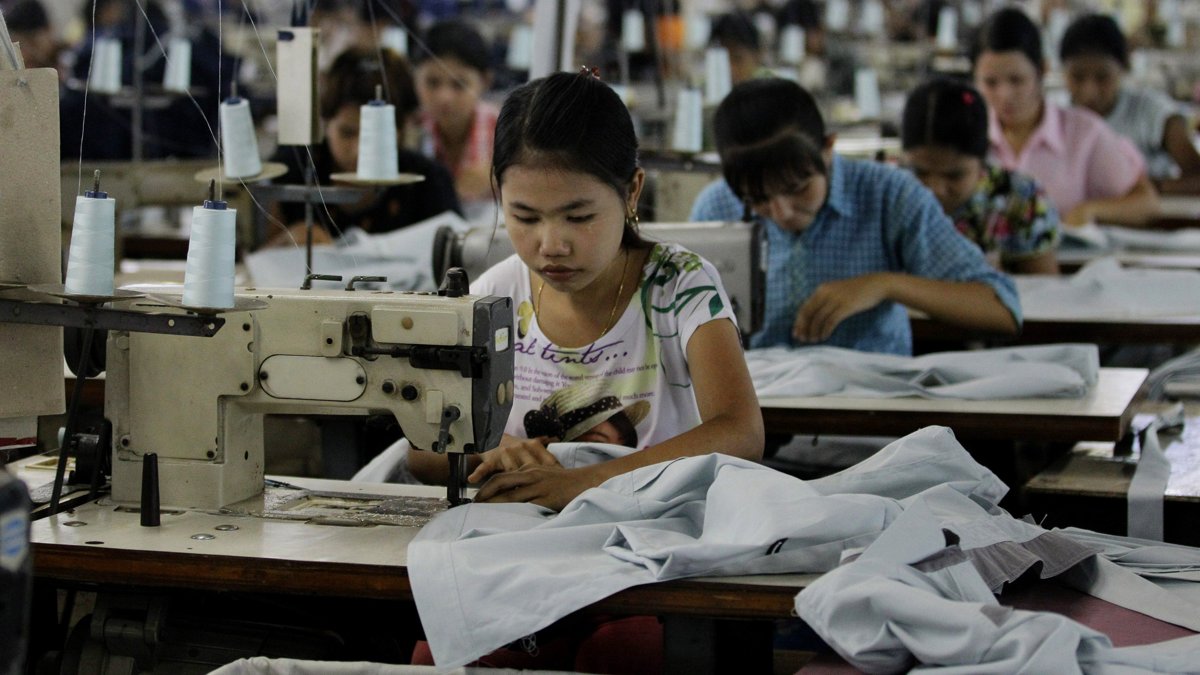
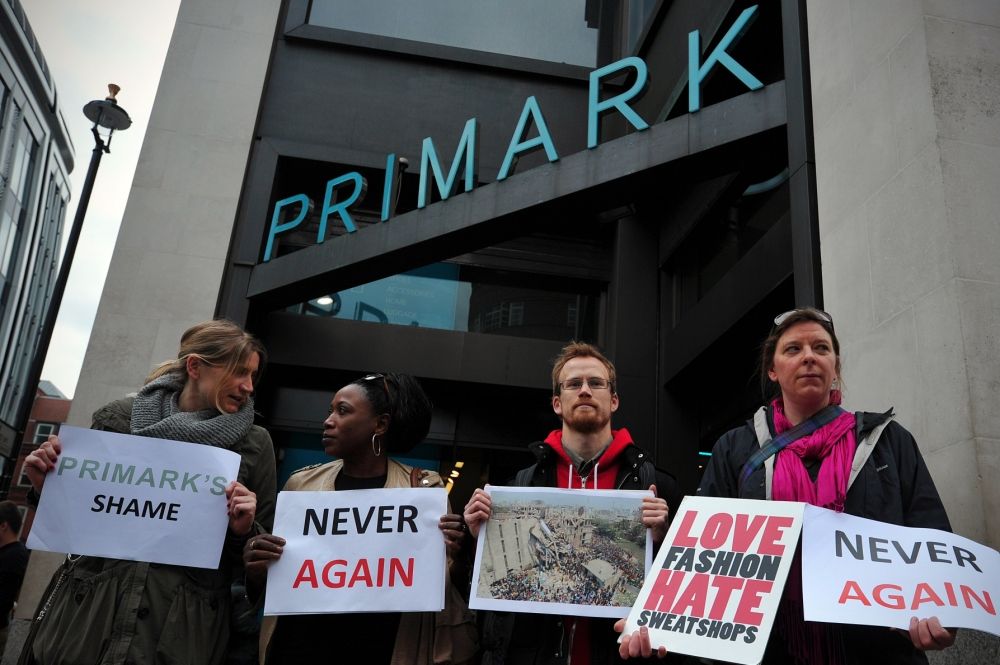 Primark axes suppliers for using child labour .Fashion chain Primark has axed three longstanding suppliers in southern India for using child labour after being alerted to the practice .The three suppliers - from the Tirapur region of the Tamil Nadu province - were sub-contracting embroidery work on dresses to child home workers. Almost its entire range is sourced from low-cost suppliers in Asia.
Primark axes suppliers for using child labour .Fashion chain Primark has axed three longstanding suppliers in southern India for using child labour after being alerted to the practice .The three suppliers - from the Tirapur region of the Tamil Nadu province - were sub-contracting embroidery work on dresses to child home workers. Almost its entire range is sourced from low-cost suppliers in Asia.

